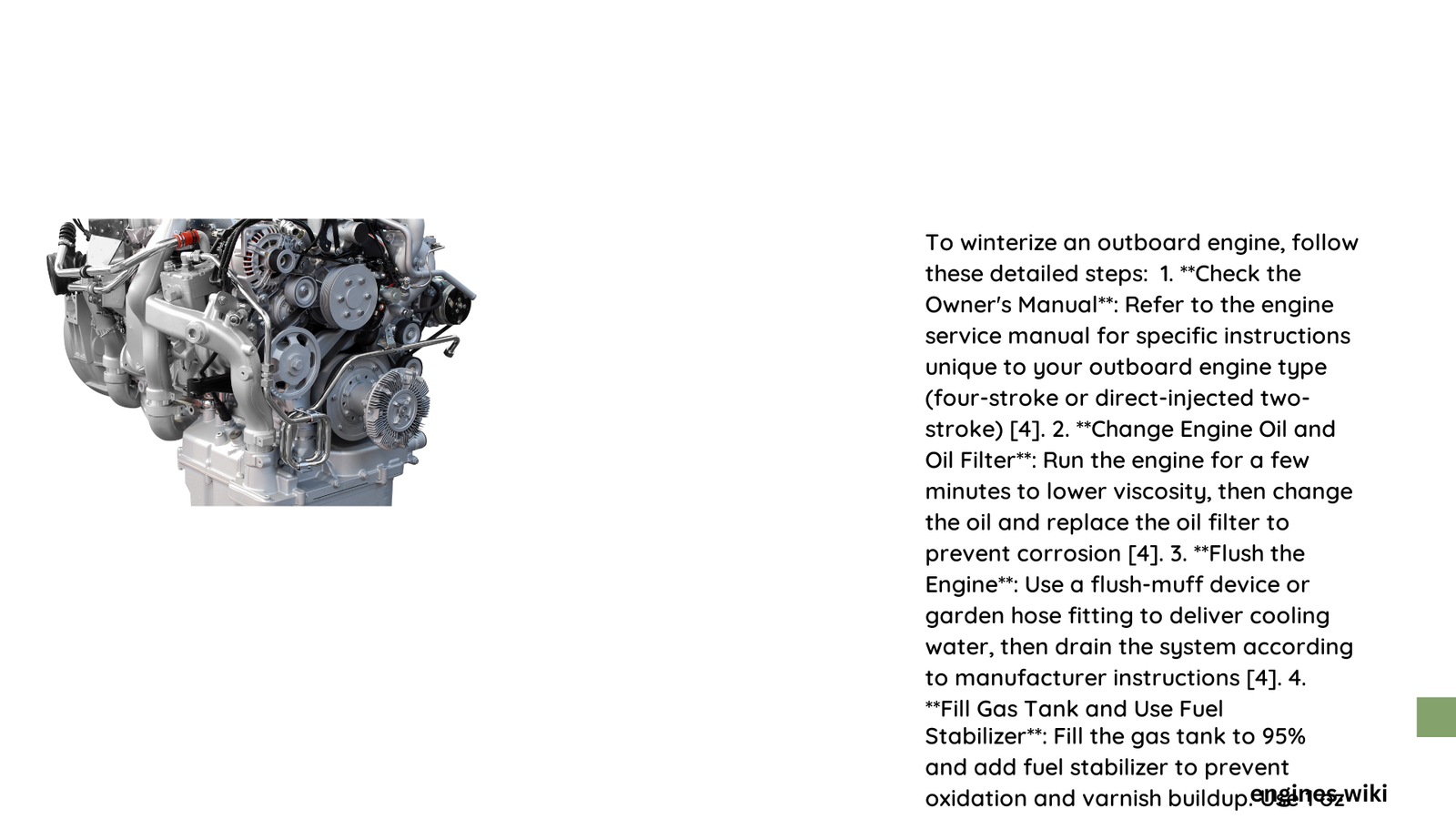Winterizing an outboard engine is a critical maintenance process that prevents costly damage during cold months. Boat owners must systematically protect their marine motors by addressing fuel systems, internal components, and potential freezing risks. Proper winterization ensures your outboard engine remains in optimal condition, preventing corrosion, fuel degradation, and mechanical failures that can occur when marine engines are left exposed to harsh winter conditions.
Why Should You Protect Your Outboard Motor?
Winterizing an outboard engine is not just a recommendation—it’s a necessity for preserving your marine investment. Cold temperatures can cause significant damage to unprotected motors, leading to expensive repairs and potential complete engine failure.
What Happens Without Proper Winterization?
| Risk | Potential Damage | Estimated Repair Cost |
|---|---|---|
| Water Freezing | Cracked Engine Block | $2,000 – $5,000 |
| Fuel System Degradation | Carburetor/Fuel Line Damage | $500 – $1,500 |
| Corrosion | Internal Component Failure | $1,000 – $3,000 |
How to Prepare Your Outboard Engine for Winter?

Drain and Flush Water Systems
- Use Flushing Attachment
- Connect to water intake
- Run engine in clean water
-
Ensure complete drainage of cooling passages
-
Remove Residual Water
- Tilt engine to drain remaining water
- Use compressed air if necessary
- Check all water passages thoroughly
What Fluids Need Attention?
Oil Replacement Process
- Change engine oil completely
- Replace transmission fluid
- Use marine-grade lubricants
- Inspect oil filters for potential replacement
How to Protect Fuel System?
Fuel Stabilization Steps:
– Add marine-grade fuel stabilizer
– Use 1 oz per 10 gallons of fuel
– Run engine to circulate stabilized fuel
– Disconnect fuel line to empty delivery components
What Internal Components Require Protection?
Cylinder and Component Preservation
- Remove spark plugs
- Apply fogging oil to cylinder walls
- Rotate flywheel to distribute protective coating
- Reinstall spark plugs with anti-seize compound
Additional Winterization Recommendations
- Lubrication
- Grease all mechanical fittings
- Apply marine-grade corrosion inhibitors
-
Check trim mechanisms
-
Storage Considerations
- Store in dry, temperature-controlled environment
- Cover engine to prevent dust accumulation
- Remove battery and store separately
Expert Tips for Long-Term Engine Health
- Always consult manufacturer’s specific guidelines
- Use high-quality marine-grade products
- Perform annual professional inspection
- Document maintenance procedures
Estimated Winterization Costs
| Item | Typical Cost Range |
|---|---|
| Fuel Stabilizer | $8 – $15 |
| Fogging Oil | $10 – $25 |
| Marine Lubricants | $30 – $60 |
| Miscellaneous Supplies | $50 – $100 |
| Total Estimated Cost | $100 – $200 |
Final Recommendations
Investing time and modest resources in winterizing your outboard engine can save thousands in potential repair costs. Systematic, thorough preparation ensures your marine motor remains in peak condition, ready for next season’s adventures.
Caution Points
- Never use automotive antifreeze in marine engines
- Avoid shortcuts in maintenance process
- Replace worn components immediately
Reference:
– BoatUS Winterization Guide
– Mercury Marine Maintenance Resources
– National Marine Manufacturers Association
